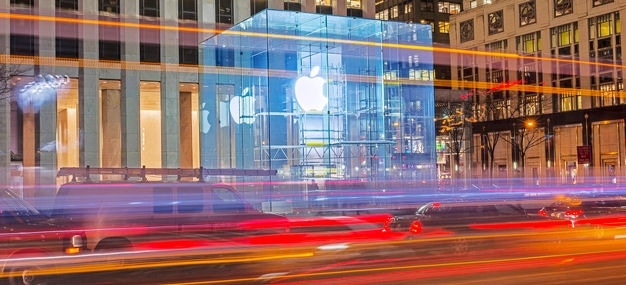Apple has taken advantage of a reduction in Value Added Tax (VAT) to cut the price of some iPhone models as it attempts to recapture the attention of distracted Chinese consumers.
April 3, 2019

Apple has taken advantage of a reduction in Value Added Tax (VAT) to cut the price of some iPhone models as it attempts to recapture the attention of distracted Chinese consumers.
What used to be a profit machine for Apple is now proving to be a difficult market. During the most recent financial results, sales in Greater China declined to $13.1 billion, 15.6% of total revenues, compared to $17.9 billion, or 20.3% in the same period of 2017. The overarching smartphone segment in struggling, but it seems to be hitting Apple harder than most.
According to Reuters, the Chinese Government is scrapping a 3% VAT on many luxury goods across the country in an effort to inspire consumer spending. As a result, Apple will be reducing prices for the iPhone XS by 5.8%, and 4.6% for the iPhone XR.
This is not the first time this year iPhone models have seen a cut, as many retailers dropped prices in January following a period of weak sales. China has not been a happy hunting ground for Apple in recent months.
At one point, the iPhone was one of the most desirable devices across the country, with the Apple brand being viewed as somewhat of a status symbol. It was rumoured all Apple had to do to boost sales was release a limited-edition device which was a different colour, and such was the desirability of the brand, sales would spike as consumers wanted to prove they were on-trend with the latest device.
Unfortunately for Apple, these days are seemingly in the past. Not only are smartphone sales plummeting across the country, but domestic brands are proving to be stiff competition.
Research from analyst firm Counterpoint suggest smartphone sales declined by 12% year-on-year during the final quarter of 2018, with Apple’s sales also dropping 12%. The reason has been put down to price, as cheaper, domestic rivals boosted sales across the period. Chinese manufacturers now account for four of the five top-selling brands in China, with Huawei firmly positioned at the top of the pile with 28% market share.
This is of course not a trend which is limited to China. Apple did decline year-on-year across the world, while Chinese brands are proving to be attractive to consumers.
Xiaomi international sales increased 118% to make up 40% of its total revenue in the fourth quarter, compared with just 28% for 2017, while Huawei is now the second most popular smartphone brand worldwide with Consumer CEO Richard Yu suggesting it could be number one by the end of 2019.
Apple CEO Tim Cook will be frustrated over recent performances, as while the supply chain guru is certainly improving processes and operations at the business, a lack of innovation is seemingly worrying consumers. Apple is often known for breaking the mould when it comes to new products, but nothing innovative has emerged over the last couple of years. Alongside this drudge of incremental gains, prices have been shooting northwards.
This seems to be the main concern for a lot of consumers; prices are increasing but there is very little to justify the vast financial outlay. As a result, refurbished devices are becoming more popular, while some consumers are simply holding onto products for longer.
While reducing the price of its products seemingly contradicts Apple’s quest to maintain its luxury and exclusive brand identity, it has started working with Alipay. The partnership here will offer Chinese customers zero-percent finance options to entice more customers back into the increasingly deserted Apple stores.
After shedding revenues, declining shipments and price cuts, Apple has shown it is not immune to global trends. It defied logic for many years, but now reality is catching up.
Having said that, Apple is sitting out the initial 5G devices surge, as is its tradition when new hype emerges around smartphones. We’ll be unlikely to see an Apple 5G device until 2020, but you can almost guarantee this will be a product which will attract the queues to the front of the Apple stores in the early hours of the morning.
About the Author(s)
You May Also Like







.png?width=300&auto=webp&quality=80&disable=upscale)

.png?width=300&auto=webp&quality=80&disable=upscale)
_1.jpg?width=300&auto=webp&quality=80&disable=upscale)



.png?width=800&auto=webp&quality=80&disable=upscale)